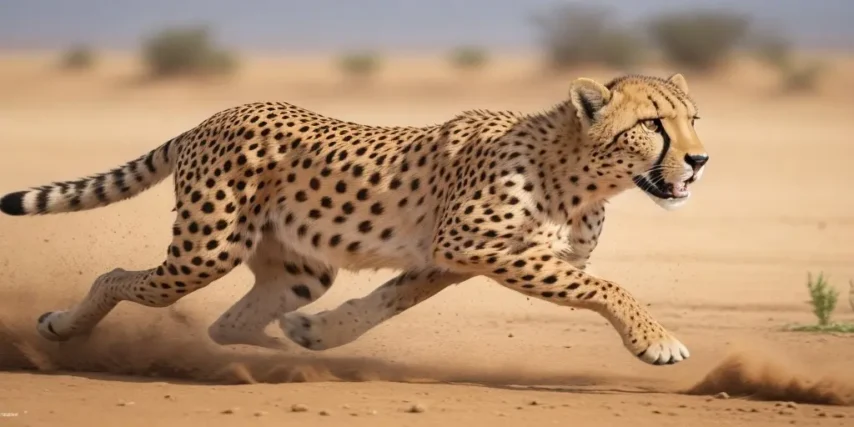Unleashing the Speed Demon: A Deep Dive into the Astonishing Velocity of the Cheetah
In the vast and diverse realm of the animal kingdom, the cheetah stands out as a true speed champion, renowned for its remarkable agility and unparalleled acceleration. As the fastest land mammal on Earth, the cheetah’s explosive bursts of speed have captivated researchers, wildlife enthusiasts, and the curious minds of people worldwide. This article delves into the fascinating world of the cheetah, exploring the mechanics behind its incredible speed, its adaptations for high-velocity pursuits, and the significance of this exceptional skill in the wild.

Body:
- Built for Speed: Anatomy and Physiology of the Cheetah To comprehend the cheetah’s extraordinary speed, it’s crucial to understand the physiological attributes that make it a supreme sprinter. The cheetah’s slender, aerodynamic body, lightweight build, and unique adaptations in its skeletal and muscular structure contribute to its ability to reach incredible speeds. Long, powerful limbs and a flexible spine allow the cheetah to cover substantial distances in a single stride, while non-retractable claws provide additional traction, acting like cleats on a runner’s shoe.
- Muscle Power and Energy Efficiency At the heart of the cheetah’s prowess lies its muscle composition, dominated by fast-twitch fibers that facilitate rapid contractions. These muscles generate an impressive amount of force, propelling the cheetah forward with astonishing acceleration. Furthermore, the cheetah’s respiratory and cardiovascular systems are finely tuned for optimal oxygen intake and distribution, ensuring sustained energy during high-speed chases. This combination of muscular power and energy efficiency allows the cheetah to achieve speeds that leave its prey in the dust.
- The Need for Speed: Hunting Strategies of the Cheetah The cheetah’s unparalleled speed is not just an evolutionary marvel; it’s a crucial survival strategy. In the African savannah, where the cheetah predominantly resides, competition for food is fierce. To secure a meal, the cheetah has developed an exceptional hunting technique known as the “stalk and sprint.” This involves stealthily approaching its prey to within a close range before unleashing a burst of speed to chase it down. The element of surprise, coupled with its incredible velocity, gives the cheetah the upper hand in the race for survival.
- Record-Breaking Speeds: How Fast Can a Cheetah Run? The cheetah’s speed has been a subject of awe and speculation for centuries, but modern technology has allowed scientists to measure and record its velocity accurately. Cheetahs are capable of reaching speeds up to 75 miles per hour (120 kilometers per hour) in short bursts covering distances of around 500 meters. This astonishing feat makes the cheetah not only the fastest land mammal but also one of the most efficient hunters in the animal kingdom.
- Challenges and Threats to Cheetah Speed Despite its exceptional speed, the cheetah faces numerous challenges and threats in its environment. Habitat loss, human-wildlife conflict, and a decline in prey populations pose serious risks to the cheetah’s survival. Maintaining healthy populations of prey animals is crucial for sustaining the cheetah’s speed-based hunting strategy, emphasizing the delicate balance of ecosystems and the interconnectedness of all species within them.

In the intricate tapestry of the natural world, the cheetah’s unparalleled speed stands as a testament to the wonders of evolution and adaptation. This magnificent creature, with its finely tuned physique and extraordinary capabilities, continues to captivate our imagination. Understanding the mechanics behind the cheetah’s speed not only sheds light on the marvels of the animal kingdom but also highlights the importance of conservation efforts to ensure the survival of this incredible species. As we marvel at the cheetah’s sprinting prowess, let us also reflect on the responsibility we bear to protect and preserve the biodiversity that makes our planet so rich and vibrant.







